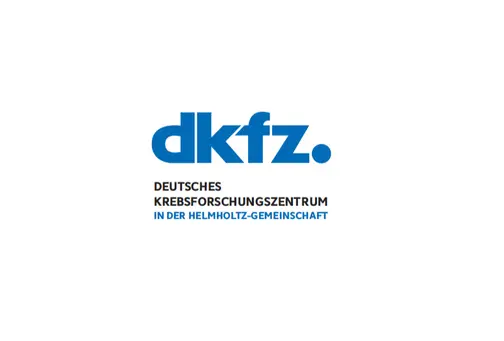Flow Cytometry Core Facility

Dr. Steffen Schmitt
Head of Department

Our Service
Thanks to continous technical development and the use of novel fluorescent dyes, the field of application of flow cytometry has steadily expanded in recent years. Originally developed as a method in immunology and haematology (routine diagnostics), flow cytometry is increasingly used in other biomedical research areas and in basic medical research. Especially in single cell analysis (e.g. genome and transcriptome analysis), flow cytometry cell sorting plays an important role for obtaining and processing the sample material. Flowcytometric analysis is based on a (stained) single cell suspension (or other soluble particles), which individually pass through a focused laser beam and the characteristic scattered and fluorescent light generated is detected separately. With this method, relatively large cell counts can be analysed in a comparatively short time (up to 30.000 cells per second). The number of parameters per cell that can be analysed increases with the number of lasers and fluorescent dyes used. With our cell sorting devices at the DKFZ we can detect over twenty parameters at the single cell level simultaneously with the above-mentioned flow rate and sort four subpopulations in parallel. For the staining of cells, fluorescence dye-labelled antibodies are generally used, which specifically recognize and label structures on the cells. By suitable selection and composition of the individual markers with different fluorescent dyes, several dozens of subpopulations can be distinguished in one panel. The Core Facility Flow Cytometry at the DKFZ is a central service facility that advises and supports scientists in the planning, execution and evaluation of flow cytometry analyses and cell sorting. Modern instruments (analytical instruments and cell sorters) as well as various software are available for this purpose. In addition, the flow cytometry core facility is involved in the training of DKFZ staff and doctoral students. The courses on offer can be viewed via the department for advanced training. Course materials are made available via the DKFZ's internal eLearning portal. After training (participation of our lectures and practical introduction and/ or training by staff members) and acknowledgment of our user-guidelines, the use of the analysis equipment is directly done by the users. The cell sorting devices are operated with the support of our staff members. Registered users fill out an "Initial Sort Discussion Sheet" and reserve a sort time slot online, which must be confirmed by the core facility members.
Instrumentation
Instruments for cell sorting
- 3x BD FACSAria™ Fusion Flow Cytometer
- 2x BD FACSAria II™
- 1x BD FACSAria III™
- 1x BD FACSymphony S6 SE™
Instruments for cell analysis
- 4x BD FACSCanto II™
- 2x BD LSRFortessa™
- 2x Cytek® Aurora
- 1x Cytek® Guava easyCyte BGV HT®
- 1x BIO-RAD ZE5 Cell Analyzer
- 1x BD FACSymphony A5 SE™
Instruments for image-based sorting
- 1x BD FACSDiscover™ S8
Instruments for image-based cell analysis
- 1x Cytek® Amnis® ImageStream®X Mk II
Employees
-

Dr. Steffen Schmitt
Head of department
-
Tobias Rubner
Employee
-
Klaus Hexel
Employee
-
Florian Blum
Employee
-
Dr. Marcus Eich
Employee
-
Verena Kalter
Employee
-
Dr. Diana Angelica Ordonez Rueda
Employee
Publications
Kuhn TM, Paulsen M, Cuylen-Haering S, Accessible high-speed image-activated cell sorting. Trends Cell Biol. 2024 Aug;34(8):657-670. doi: 10.1016/j.tcb.2024.04.007.
Öztürk S, Paul Y, Afzal S, Gil-Farina I, Jauch A, Bruch PM, Kalter V, Hanna B, Arseni L, Roessner PM, Schmidt M, Stilgenbauer S, Dietrich S, Lichter P, Zapatka M, Seiffert M. Longitudinal analyses of CLL in mice identify leukemia-related clonal changes including a Myc gain predicting poor outcome in patients. Leukemia. 2022 Feb;36(2):464-475. doi: 10.1038/s41375-021-01381-4.
Xydia M, Rahbari R, Ruggiero E, Macaulay I, Tarabichi M, Lohmayer R, Wilkening S, Michels T, Brown D, Vanuytven S, Mastitskaya S, Laidlaw S, Grabe N, Pritsch M, Fronza R, Hexel K, Schmitt S, Müller-Steinhardt M, Halama N, Domschke C, Schmidt M, von Kalle C, Schütz F, Voet T, Beckhove P. Common clonal origin of conventional T cells and induced regulatory T cells in breast cancer patients. Nat Commun. 2021 Feb 18;12(1):1119. doi: 10.1038/s41467-021-21297-y.
Merbecks MB, Ziesenitz VC, Rubner T, Meier N, Klein B, Rauch H, Saur P, Ritz N, Loukanov T, Schmitt S, Gorenflo M. Intermediate monocytes exhibit higher levels of TLR2, TLR4 and CD64 early after congenital heart surgery. Cytokine. 2020 Sep;133:155153. doi: 10.1016/j.cyto.2020.155153.
Usta D, Sigaud R, Buhl JL, Selt F, Marquardt V, Pauck D, Jansen J, Pusch S, Ecker J, Hielscher T, Vollmer J, Sommerkamp AC, Rubner T, Hargrave D, van Tilburg CM, Pfister SM, Jones DTW, Remke M, Brummer T, Witt O, Milde T. A Cell-Based MAPK Reporter Assay Reveals Synergistic MAPK Pathway Activity Suppression by MAPK Inhibitor Combination in BRAF-Driven Pediatric Low-Grade Glioma Cells. Mol Cancer Ther. 2020 Aug;19(8):1736-1750. doi: 10.1158/1535-7163.MCT-19-1021.
Schmitt S. Durchflusszytometrie. Biospektrum 06.20; 655-657.
doi: 10.1007/s12268-020-1472-5
Cossarizza A, Chang HD, Radbruch A, …, Eich M, …, Schmitt S, et al., Guidelines for the use of flow cytometry and cell sorting in immunological studies (second edition). Eur J Immunol. 2019 Oct;49(10):1457-1973. doi: 10.1002/eji.201970107.
Eich M, Trumpp A, Schmitt S, OMIP-059: Identification of Mouse Hematopoietic Stem and Progenitor Cells with Simultaneous Detection of CD45.1/2 and Controllable Green Fluorescent Protein Expression by a Single Staining Panel. Cytometry A. 2019 Oct;95(10):1049-1052. doi: 10.1002/cyto.a.23845.
Cossarizza A, Chang HD, Radbruch A, …, Eich M, …, Schmitt S, et al., Guidelines for the use of flow cytometry and cell sorting in immunological studies.Eur J Immunol. 2017 Oct;47(10):1584-1797. doi: 10.1002/eji.201646632.
Schmitt S, Das Phänomen (Durchfluss)-Zytometrie. GIT-Laborfachzeitschrift Oct 2017: 24-28.
Klose J, Eissele J, Volz C, Schmitt S, Ritter A, Ying S, Schmidt T, Heger U, Schneider M, Ulrich A. Salinomycin inhibits metastatic colorectal cancer growth and interferes with Wnt/β-catenin signaling in CD133+ human colorectal cancer cells. BMC Cancer. 2016 Nov 17;16(1):896. doi: 10.1186/s12885-016-2879-8.
Scognamiglio R, Cabezas-Wallscheid N, Thier MC, Altamura S, Reyes A, Prendergast ÁM, Baumgärtner D, Carnevalli LS, Atzberger A, Haas S, von Paleske L, Boroviak T, Wörsdörfer P, Essers MA, Kloz U, Eisenman RN, Edenhofer F, Bertone P, Huber W, van der Hoeven F, Smith A, Trumpp A. Myc Depletion Induces a Pluripotent Dormant State Mimicking Diapause. Cell. 2016 Feb 11;164(4):668-80. doi: 10.1016/j.cell.2015.12.033.
Chessa F, Mathow D, Wang S, Hielscher T, Atzberger A, Porubsky S, Gretz N, Burgdorf S, Gröne HJ, Popovic ZV. The renal microenvironment modifies dendritic cell phenotype.
Kidney Int. 2016 Jan;89(1):82-94. doi: 10.1038/ki.2015.292.
Haas S, Hansson J, Klimmeck D, Loeffler D, Velten L, Uckelmann H, Wurzer S, Prendergast ÁM, Schnell A, Hexel K, Santarella-Mellwig R, Blaszkiewicz S, Kuck A, Geiger H, Milsom MD, Steinmetz LM, Schroeder T, Trumpp A, Krijgsveld J, Essers MA. Inflammation-Induced Emergency Megakaryopoiesis Driven by Hematopoietic Stem Cell-like Megakaryocyte Progenitors. Cell Stem Cell. 2015 Oct 1;17(4):422-34. doi: 10.1016/j.stem.2015.07.007.
Cabezas-Wallscheid N, Eichwald V, de Graaf J, Löwer M, Lehr HA, Kreft A, Eshkind L, Hildebrandt A, Abassi Y, Heck R, Dehof AK, Ohngemach S, Sprengel R, Wörtge S, Schmitt S, Lotz J, Meyer C, Kindler T, Zhang DE, Kaina B, Castle JC, Trumpp A, Sahin U, Bockamp E. Instruction of haematopoietic lineage choices, evolution of transcriptional landscapes and cancer stem cell hierarchies derived from an AML1-ETO mouse model. EMBO Mol Med. 2013 Dec;5(12):1804-20. doi: 10.1002/emmm.201302661.
Grimm M, Schmitt S, Teriete P, Biegner T, Stenzl A, Hennenlotter J, Muhs HJ, Munz A, Nadtotschi T, König K, Sänger J, Feyen O, Hofmann H, Reinert S, Coy JF. A biomarker based detection and characterization of carcinomas exploiting two fundamental biophysical mechanisms in mammalian cells. BMC Cancer. 2013 Dec 4;13:569. doi: 10.1186/1471-2407-13-569.
Ernst A, Aigner M, Nakata S, Engel F, Schlotter M, Kloor M, Brand K, Schmitt S, Steinert G, Rahbari N, Koch M, Radlwimmer B, Weitz J, Lichter P. A gene signature distinguishing CD133hi from CD133- colorectal cancer cells: essential role for EGR1 and downstream factors. Pathology. 2011 Apr;43(3):220-7. doi: 10.1097/PAT.0b013e328344e391.
Bockamp E, Antunes C, Liebner S, Schmitt S, Cabezas-Wallscheid N, Heck R, Ohnngemach S, Oesch-Bartlomowicz B, Rickert C, Sanchez MJ, Hengstler J, Kaina B, Wilson A, Trumpp A, Eshkind L. In vivo fate mapping with SCL regulatory elements identifies progenitors for primitive and definitive hematopoiesis in mice. Mech Dev. 2009 Oct;126(10):863-72. doi: 10.1016/j.mod.2009.07.005.
Derbinski J, Pinto S, Rösch S, Hexel K, Kyewski B. Promiscuous gene expression patterns in single medullary thymic epithelial cells argue for a stochastic mechanism. Proc Natl Acad Sci U S A. 2008 Jan 15;105(2):657-62. doi: 10.1073/pnas.0707486105.
Presser K, Schwinge D, Wegmann M, Huber S, Schmitt S, Quaas A, Maxeiner JH, Finotto S, Lohse AW, Blessing M, Schramm C. Coexpression of TGF-beta1 and IL-10 enables regulatory T cells to completely suppress airway hyperreactivity. J Immunol. 2008 Dec 1;181(11):7751-8. doi: 10.4049/jimmunol.181.11.7751.
Huber S, Schrader J, Fritz G, Presser K, Schmitt S, Waisman A, Lüth S, Blessing M, Herkel J, Schramm C. P38 MAP kinase signaling is required for the conversion of CD4+CD25- T cells into iTreg. PLoS One. 2008 Oct 1;3(10):e3302.doi: 10.1371/journal.pone.0003302.
Get in touch with us

